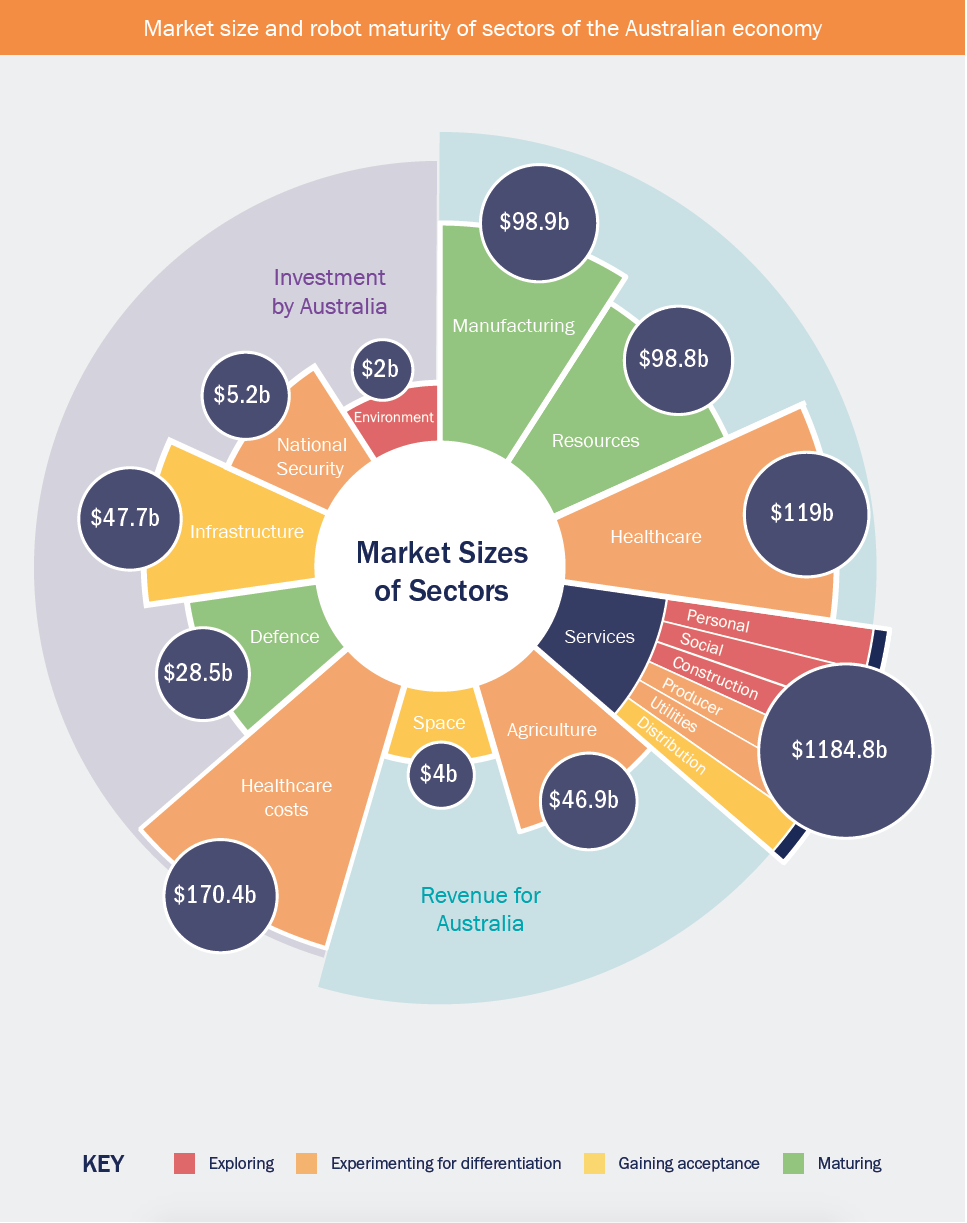
Impact on sectors of the Australian economy
Automation is set to deliver Australia a $AU2.2 trillion benefit over the next 15 years, provided that:
- Australian businesses accelerate their uptake of new technologies such as robotics, and
- workers displaced in the process are redeployed [ALB17].
As noted above, the adoption of automation is predicted to improve productivity growth by over 50% [ALB17] but this will result in changes to jobs. Some jobs will disappear while new jobs will be created, with the most impacted sectors of the economy expected to be manufacturing and services. To harness the benefits of automation, jobs must be created in other parts of the economy. An example of this shift in jobs can be seen in the computerisation of the finance sector, which has shifted work away from administrative service positions to more technologically complex areas supporting the computerisation.
In addition to automation, robotic technologies also have the potential to make existing jobs safer, more satisfying and more creative, while at the same time reducing the dirty, dull and dangerous aspects of many occupations. This is not a new concept for Australian economic reformers. Over the past 30 years, numerous areas of the economy have been transformed, such as industries impacted by the loss of tariff protection, including steel manufacturing, textiles, motor vehicles and shipbuilding. Appropriate planning and development of alternate career paths for displaced workers can minimise the impact on workers, resulting in more productive industries and newly reskilled workers deployed elsewhere.
In this roadmap, the focus is on the sectors of the Australian economy expected to be most impacted by new robotic, automation, and computer vision technologies. Major sectors are discussed separately within the following chapters.
Some of these sectors have been exposed to automation over an extended period. For example, manufacturing has seen robotic technology implemented since the 1950s. Others, such as hospitality, are relatively new to the robotics and automation scene.
Therefore, contrast exists between industries that are mature in the adoption of robotics versus those that are still in more exploratory stages. The least mature market sectors are expected to be the ones that will see the most disruptive changes. As part of the roadmap process, we have calculated a 4-point maturity score for select sectors of the Australian economy, as shown in the diagram on p. 31. This highlights the contrast between various sectors and shows those that have the most potential for future gains.

